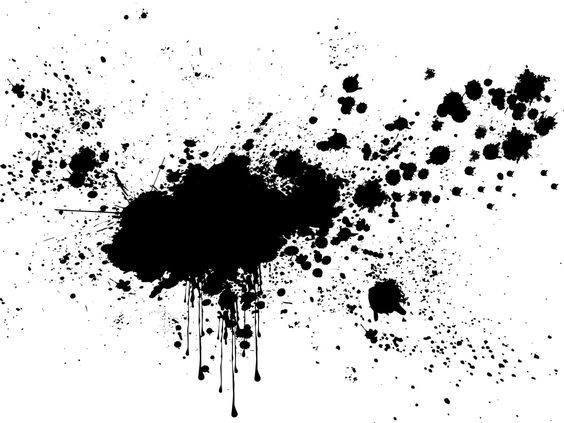I’m delighted to have been invited to submit a paper on Péladan, “the grandfather of symbolist art”, for the recent issue of Abraxas, and absolutely chuffed to have had one of my illustrations of Péladan’s work included. Abraxas #5 is now available to order, so grab your copy before they’re all gone! Here’s a small excerpt from my article, written for a general audience, but with all footnotes in place!
[su_quote][su_dropcap]I[/su_dropcap]n fin-de-siècle Paris, esoteric secrets suddenly became front page news, and could be found in the mass market paperbacks of the day. Péladan took it upon himself to effect the collective initiation of society at large through exposing them to symbolic esoterica in every form he could think of. Rather than concealing occult secrets in such a way as to protect them from ‘profane’ eyes, Péladan chose to do the precise opposite. It was profane eyes that he wanted to open; not through secret rituals behind hermetically sealed doors, but through nothing less than an artistic revolution. He used the mass media of the day, as well as literature, theatre, monographs and public exhibitions to bombard the public with his one, deceptively simple message. Spiritual evolution was available to all, and it was the sacred duty of mankind to turn their very lives into works of art, allowing true will to guide them towards their divine origin. As he said to American journalist Raymond Daly in an 1893 interview:
“Men may be divided into three classes, the consummate fools, the animiques, sensible to questions of sentiment and to the beauties of art, and the intellectuals, capable of contemplating an idea in its splendid nudity, and without aesthetic translation… I have not sufficient genius,” said my interlocutor, modestly, “to be the dazzling prism of truths; I content myself with bringing the love of art upon the animique ground, to translate ideas into aesthetic forms accessible to those who form the second class, of which I have just spoken, the animiques, the artists and lovers of art.”(Daly, ‘Mysticism in Art,’ 13).
Thus Péladan hoped that he could guide each man and woman on a path to self-initiation. This collective initiation of mankind through Beauty would redeem, not only the Fall of Adam, but the Fall of Lucifer himself… [/su_quote]
About Abraxas
Abraxas Issue #5 offers 180 large format pages of essays, poetry, interviews and art.
Printed using state-of-the-art offset lithography to our usual high standard, contributions for Abraxas #5 include an interview by Pam Grossman with Greek artist, Panos Tsagaris; an analysis of Aby Warburg’s Mnemosyne Atlas by Silvia Urbini, a visual interpretation of the Dionysian mysteries by Arrington de Dionyso; a substantial essay from Sasha Chaitow on the grandfather of esoteric art, Joséphin Péladan; an introduction to the art of Michael Bertiaux by Ariock Van de Voorde; reminiscences by Caroline Wise of her friend Olivia Robertson (1917-2013), and much more…
Editorial, Christina Oakley Harrington
Olivia Robertson: A Visionary Life, Caroline Wise
A Brief History of the Use of Spirits in European Occultism, Stephanie Spoto
Mycology, Madeline Cass
De Vermis in Se, Max Razdow
John Augustus Knapp: Modern Master of Occult Illustration, Ken Henson
Marrasio’s Masque, translation by Merlin Cox, illustrated by Gromyko Semper
Black and White & Gold All Over: An Interview with Panos Tsagaris, Pam Grossman
Musings on Breath, David Blank
The (Not Entirely) Lost ‘Art of the Apothecary’: Abramelin Oil and Ancient Perfumery, Ioannis Marathakis
Blind Love, K Lenore Siner
Victor Brauner at the Crossroads of Magic and Chance, Jon Graham
La Villa dei Misteri, Arrington de Dionyso
Esoteric City: Theological Hermeneutics in Plato’s Republic, Edward Butler, with photography by SF Said
Sonnet, Comte de Saint-Germain, translated by Sebastian Hayes
Nihilalia: In conversation with Bea Kwan Lim, Randall Morris
A Brief History of Witchcraft: Inquisitors & Witches, Ian Pyper
Games of Fate: Aby Warburg’s Mnemosyne, Plate 23a, Silvia Urbini
Oversoul, Joanna Pallaris
Hidden in Plain Sight: Joséphin Péladan’s Religion of Art, Sasha Chaitow
Bené-Satan, Sasha Chaitow
Isis and Taweret with tomb of Hafiz, Adela Leibowitz
Meeting Le Maître: An Introduction to the Art of Michael Bertiaux, Ariock Van de Voorde
Antinous and Glykon: The Gods of Good Hair in Late Antique Anatolia, P. Sufenas Virius Lupus


